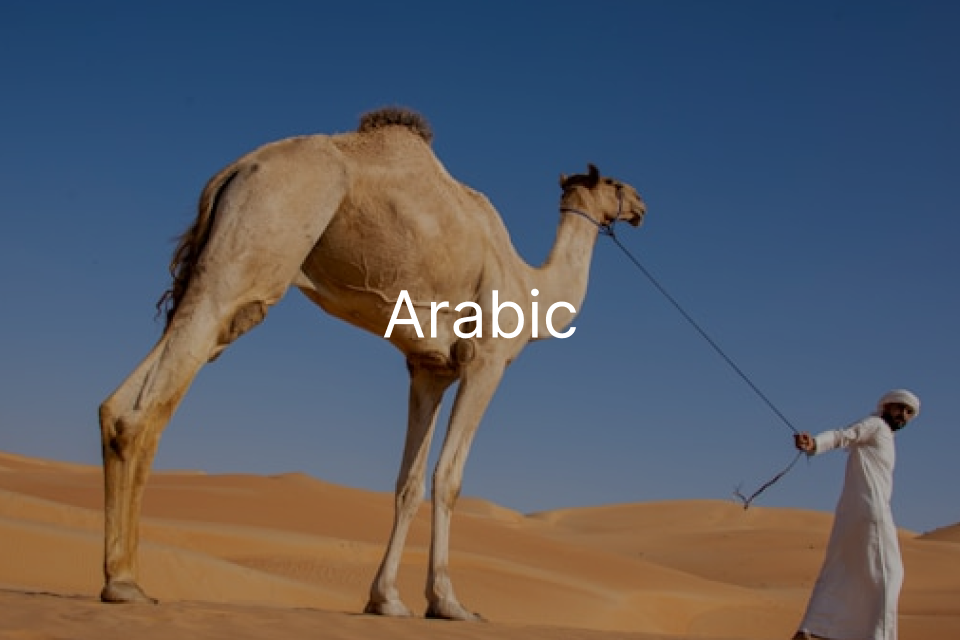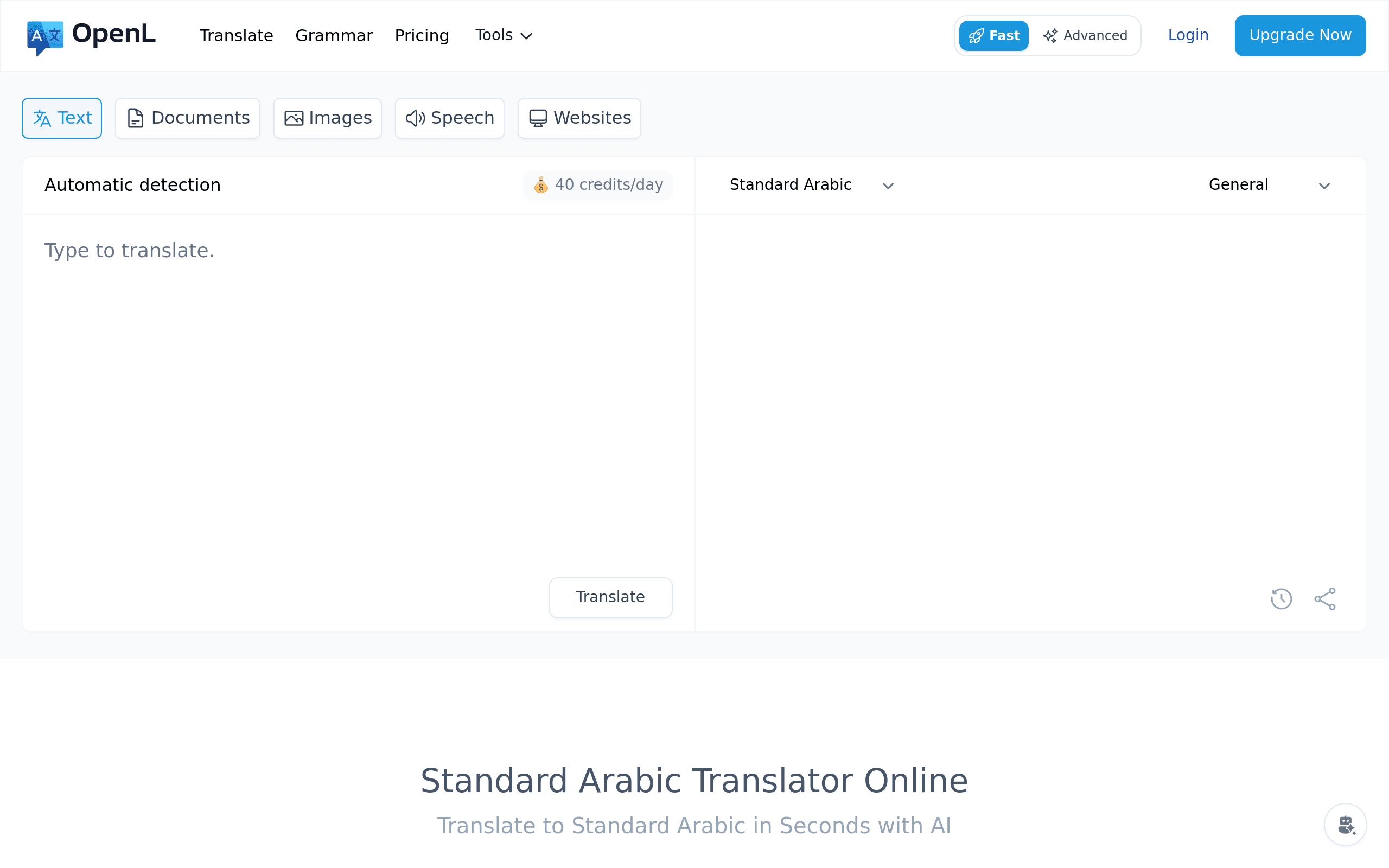Arabic: A Comprehensive Guide to a Global Language

TABLE OF CONTENTS
Introduction: More Than Just a Language
Arabic is a language of immense global importance. It’s the mother tongue for over 400 million people, an official language in 22 countries, and the sacred language of Islam, studied by billions. But beyond the numbers lies a fascinating story of history, culture, and linguistic innovation.
This guide will walk you through the world of Arabic, from its ancient roots to its modern complexities, and provide practical tips for anyone ready to start their learning journey.
The Two Faces of Arabic: Modern Standard Arabic (MSA) vs. Dialects
One of the first things to understand about Arabic is its duality. The language primarily exists in two forms:
- Modern Standard Arabic (MSA): This is the formal, universal version of Arabic. Derived from the Classical Arabic of the Quran, MSA is used in books, news broadcasts, political speeches, and education across the Arab world. If you learn Arabic in a formal setting, you’ll likely start with MSA.
- Colloquial Dialects (Aammiyya): This is the language of everyday life. Each region has its own distinct dialect, used for conversations with friends and family. These dialects can differ so much that a speaker from Morocco might struggle to understand a speaker from Iraq. Some major dialect groups include:
- Egyptian Arabic: Widely understood due to Egypt’s influential film and music industry.
- Levantine Arabic: Spoken in Lebanon, Syria, Jordan, and Palestine.
- Gulf Arabic: Used in countries like Saudi Arabia, UAE, and Qatar.
- Maghrebi Arabic: Spoken in North Africa (Morocco, Algeria, Tunisia).
For learners, this duality presents a choice: start with the universally understood MSA to read and write formally, or dive into a specific dialect to connect with locals in a particular region.
A Journey Through History: From Desert Poetry to a Golden Age
The story of Arabic begins over 2,500 years ago with the nomadic tribes of the Arabian Peninsula. Its journey through time is marked by several key milestones.
- The Rise of Classical Arabic: The 7th century was a pivotal moment. With the advent of Islam and the writing of the Quran, Arabic was standardized into what is now known as Classical Arabic. This elevated the language, making it the vehicle for a new faith and a burgeoning empire.
- The Islamic Golden Age (8th-14th centuries): As the Islamic empire expanded, Arabic became the lingua franca of science, philosophy, mathematics, and literature. Scholars in Baghdad, Córdoba, and Cairo translated Greek texts, made groundbreaking discoveries, and wrote works that would influence Europe for centuries. It was during this time that the first comprehensive Arabic dictionary, Kitāb al-‘Ayn, was compiled.
- The Nahda (19th Century): Known as the Arab Renaissance, this period saw a push to modernize the language. Thinkers and writers sought to adapt Arabic for the modern world, simplifying its script and incorporating new ideas, paving the way for the Modern Standard Arabic used today.
| Period | Key Event | Significance |
|---|---|---|
| Pre-7th Century | Origins among nomadic tribes | Early forms like Safaitic script emerge in inscriptions. |
| 7th Century CE | Standardization with the Quran | Becomes the language of administration and a global religion. |
| 8th-14th Centuries | Islamic Golden Age | The international language of science, philosophy, and art. |
| 19th Century | The Nahda (Renaissance) | Modernization efforts lead to the development of MSA. |
What Makes Arabic Unique? Script, Roots, and Sounds
Arabic has several distinctive features that make it both challenging and beautiful.
- Right-to-Left Script: Arabic is written and read from right to left in a cursive script where letters connect. Its 28 letters change shape slightly depending on their position in a word (initial, medial, or final).
- The Root System: At the heart of Arabic vocabulary is a brilliant “root and pattern” system. Most words are built from a three-consonant root (e.g., k-t-b, related to writing). By adding vowels and other letters in specific patterns, you can create a family of related words:
- kitāb (book)
- kātib (writer)
- maktab (office or desk)
- yaktub (he writes)
- Unique Phonetics: Arabic contains sounds not typically found in English, such as pharyngeal fricatives (like
ع‘ayn andحḥāʼ), which are produced deep in the throat. Mastering these sounds is a key part of achieving authentic pronunciation.
How to Start Learning Arabic
Feeling inspired? Learning Arabic is a rewarding challenge. Here’s a roadmap for beginners:
- Master the Alphabet: Everything starts here. Focus on learning to recognize, pronounce, and write the 28 letters and their different forms.
- Choose Your Path (MSA or Dialect): As discussed, decide if you want to start with the formal MSA or a specific colloquial dialect. MSA is great for a broad foundation, while a dialect is better for immediate conversational skills in one region.
- Use Quality Resources: There are more tools available today than ever before.
- Apps: Duolingo, Rosetta Stone, and Memrise offer gamified lessons for beginners.
- Online Courses: Platforms like Arab Academy provide structured curricula for all levels.
- Immersion Tools: For listening practice, check out Talk in Arabic for various dialects or listen to Arabic music and watch movies.
- Practice Consistently: Even 20 minutes a day can make a huge difference. Consistency is more important than cramming. Practice writing the script, review vocabulary, and try to speak out loud whenever possible.
Bridging the Gaps: AI and Arabic Translation
Navigating the rich tapestry of Arabic dialects can be challenging, not just for learners but also for businesses and content creators. This is where modern technology offers a powerful solution.

AI-powered tools like the OpenL Arabic Translator are designed to understand this complexity. Unlike generic translators that often default to MSA, OpenL recognizes and accurately translates multiple regional variants, including:
- Standard Arabic (MSA)
- Egyptian Arabic
- Sudanese Arabic
- Iraqi Arabic
- Yemeni Arabic, and many others.
For a learner, such a tool can be an invaluable companion, helping you see how a single idea is expressed differently across the Arab world. For professionals, it ensures your message is not just translated but localized, resonating authentically with your target audience. It bridges the gap between MSA and the living, breathing dialects spoken every day.
Conclusion
Arabic is more than a set of words; it’s a gateway to a dozen cultures, a deep history, and a vibrant global community. While its dual nature and unique script present a challenge, the journey of learning it is immensely gratifying. Whether you aim to read ancient poetry, conduct business in the Middle East, or simply connect with new friends, the world of Arabic awaits.
Sources:


